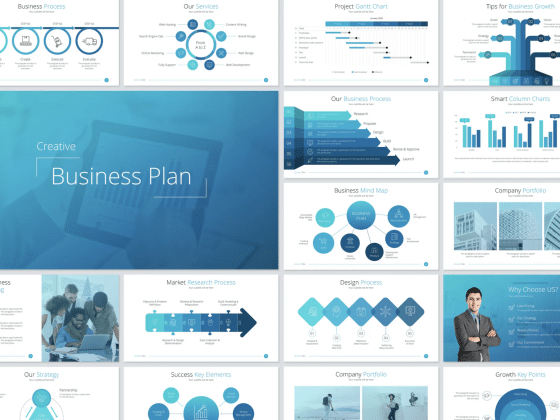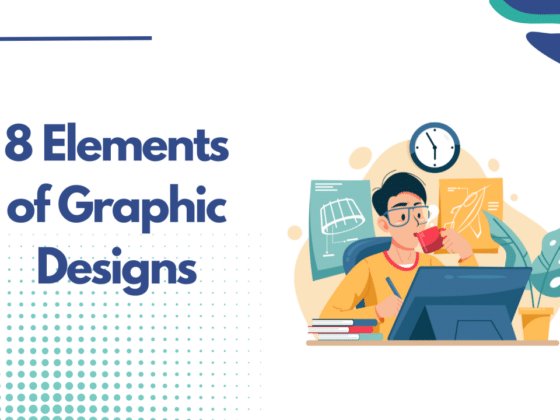In today’s digital age, a business’s virtual storefront – its website – plays a pivotal role in driving success. However, in the vast ocean of the internet, standing out isn’t just about being present; it’s about creating an engaging and captivating web experience. So, how do you transform your webpage from just another speck in the digital realm to a vibrant beacon attracting customers? Here’s a comprehensive guide to crafting that killer web design.
Top Web Designing Principles To Live By
- Simplicity Reigns Supreme: Your website should be an oasis of clarity and easy navigation.
- Harness the Power of White Space: Proportional division with the proper content-to-space ratio enhances visual appeal.
- A Picture Paints a Thousand Words: Use visuals strategically to convey messages efficiently.
- Typography Tells a Tale: It’s not just what you say but how you display it that counts.
- Animated Allure: Though tricky, animations can breathe life into your website when executed right.
Let’s dive deeper into the details of creating jaw-dropping web design.
Top Tips For Amazing Web Design
- Crafting Content for Humans, Not Machines
While Search Engine Optimization (SEO) and keywords are essential, it’s imperative to remember that your primary audience is humans. The era of internet users demands concise, clear, and compelling content. Avoid dense blocks of text; instead, opt for bullet points, infographics, and brief paragraphs. Remember, quality trumps quantity every time. - Stay Trendy, But Timeless
Web design trends evolve, but the essence remains constant. Here are some prevailing design approaches:- Minimalist Design: Less is more. A clutter-free design ensures your message stands out.
- Responsive Design: Ensure your website shines on any device, from desktops to smartphones.
- Flat & Material Design: These designs play with basic shapes and depths, offering a modern, clean look.
- Parallax Scrolling: An interactive design element that adds a touch of dynamism to your website.
- Navigating with Ease
Your website shouldn’t be a puzzle game. Navigation should be intuitive, with menus that are clearly labeled and organized. Streamlined navigation boosts user retention and enhances user experience. - Strategic Keyword Selection
Optimize your website for both SEO and organic searches. Use tools like Google AdWords Keyword Planner and SEMrush to pinpoint the perfect balance between general and specific keywords. - Make Contacting You a Breeze
Your ‘Contact Us’ section should be easily accessible and prominent. It’s your digital invitation, assuring users you’re just a click away. - Building Trust Through Transparency
Being upfront about your policies, from cookie usage to returns, reinforces trust. Remember, it isn’t just about what you say but how transparently you say it. - Observe, Analyze, Personalize
While it’s beneficial to study competitors, your design should prioritize your customers. Understand your audience, their preferences, and craft a design that resonates with them.
Case in Point: Designing a Perfect Restaurant Website
If you’re an Orange County restaurant owner, you will resonate with this: Before they savor your dishes, they savor your website’s design. Here are actionable tips tailored for restaurant websites:
- Local Flavor: Understand the demographics and culture of your area. Adapt your website’s tone and visuals accordingly.
- Mouth-Watering Menus: Your menu should be the star! Ensure it’s easily accessible and readable.
- Simplicity Speaks Volumes: Avoid lofty claims. Instead, showcase testimonials, customer reviews, and unique selling points.
- Engaging Calls to Action: Strike a balance between being inviting and pushy. Use interactive contact forms to entice users to act.
Things To Consider When Web Designing
Understanding User Behavior: Leveraging tools like heat maps and user behavior analytics.
The behavior of your website visitors provides valuable insights into the strengths and weaknesses of your design. Tools like heatmaps show where users focus their attention, where they click, and how far they scroll. Using this data, designers can strategically position important content or make adjustments to areas that may be confusing.
User behavior analytics can also shed light on the paths visitors take through your site. This information can be used to streamline navigation, highlight popular pages, and ensure a smoother user journey.
Mobile-First Design: Why designing for mobile devices is now more critical than ever.
With a significant portion of global internet traffic originating from mobile devices, designing with a mobile-first approach is not just an option—it’s a necessity. Mobile-first design means starting with the mobile version of your website before expanding to tablet and desktop versions. This approach ensures a seamless experience across all devices, with responsive design adapting to various screen sizes. Additionally, mobile-optimized sites are favored by search engines, boosting SEO efforts.
SEO Foundations for Web Design: How design can influence your search engine rankings.
Search engine optimization (SEO) isn’t just about keywords. Web design is crucial in SEO, impacting how search engines index and rank your site. Factors such as site loading speed, mobile optimization, clear site structure, and schema markup can all influence your site’s visibility in search results. An SEO-friendly design ensures that your website is both user-friendly and search engine-friendly.
Loading Time & Performance: Ensuring swift site performance for better user experience.
A slow-loading site can frustrate users and lead them to exit before your content loads—various design elements, including optimized images, efficient code, and streamlined multimedia, can influence site performance. Tools like Google PageSpeed Insights can help identify areas for improvement. Remember, every second counts, and enhancing your site’s speed can significantly improve user retention and conversion rates.
Interactive Elements & User Engagement: Enhancing user interactions through clickable elements and animations.
From simple hover effects to complex animations, interactive elements can captivate users and make your website more memorable. However, it’s essential to strike a balance. Overuse can overwhelm and distract site visitors from your content. Use interactions to guide users, emphasize essential content, and enhance the overall user experience.
Call-to-Action Mastery: Crafting compelling CTAs that drive user action.
A well-designed CTA can be the difference between a passive visitor and an engaged user. Effective CTAs are clear, concise, and stand out without being obtrusive. Placement is crucial—your CTA should be easily accessible without disrupting the user’s journey. A/B testing different designs, messages, and positions can help determine the most effective approach.
Harnessing Multimedia: Integrating videos, podcasts, and other multimedia effectively.
Multimedia elements, such as videos, infographics, and podcasts, can enrich your website content, making it more engaging and versatile. However, it’s crucial to ensure that multimedia doesn’t hamper site performance. Always opt for optimized file sizes, and consider using third-party platforms like YouTube or SoundCloud to host large files.
Safety & Security: Protecting user data and ensuring a safe browsing experience.
The rise of cyber threats means that website security can’t be overlooked. Implementing SSL certificates, regularly updating and patching software, and employing security plugins can help protect your site and visitors. Prioritizing security protects your business and instills trust in your users.
Feedback & Iteration: How to collect, analyze, and act upon user feedback for continuous improvement.
No website is perfect from the get-go. Collecting user feedback provides real-world insights into how your site is perceived and used. Tools like surveys, feedback forms, and user testing sessions can be invaluable. Once feedback is gathered, it’s crucial to act on it. Regularly iterating on your design based on user input ensures that your website remains relevant, user-friendly, and effective.
With these guidelines in mind, web designers and businesses can craft websites that look appealing, function seamlessly, drive user engagement, and fulfill their core objectives.
In the age of digital dominance, an engaging and efficient website is the cornerstone of a brand’s identity. Crafting a site is more than just aesthetics—it’s about creating an experience for your audience. From the initial impact of visuals to the ease of navigation, every aspect plays a pivotal role in your brand’s online narrative.
But remember, your website is a living entity. As your business grows and changes, so should your website. Regular audits, A/B testing, and staying updated with design innovations are essential. With a dedication to excellence and a commitment to continuous learning, you’ll ensure your website remains a powerful tool in your business arsenal.
Hire a Web Design Company You Can Count On!
Urban Geko is your one-stop solution for creating the best web design that is interactive and optimized for search engines. Let us take over creating your website for the optimum web design. Get in touch today!







